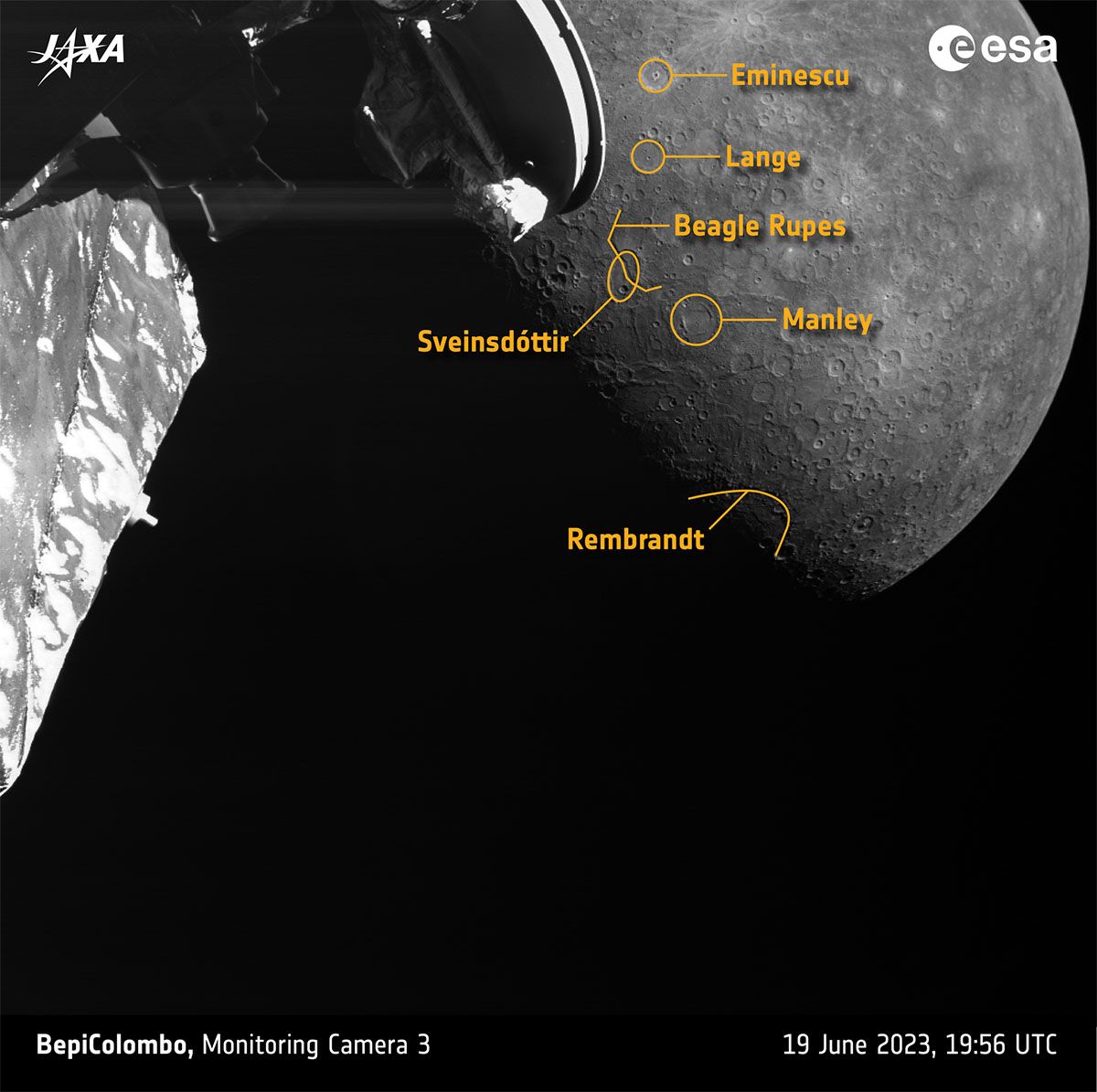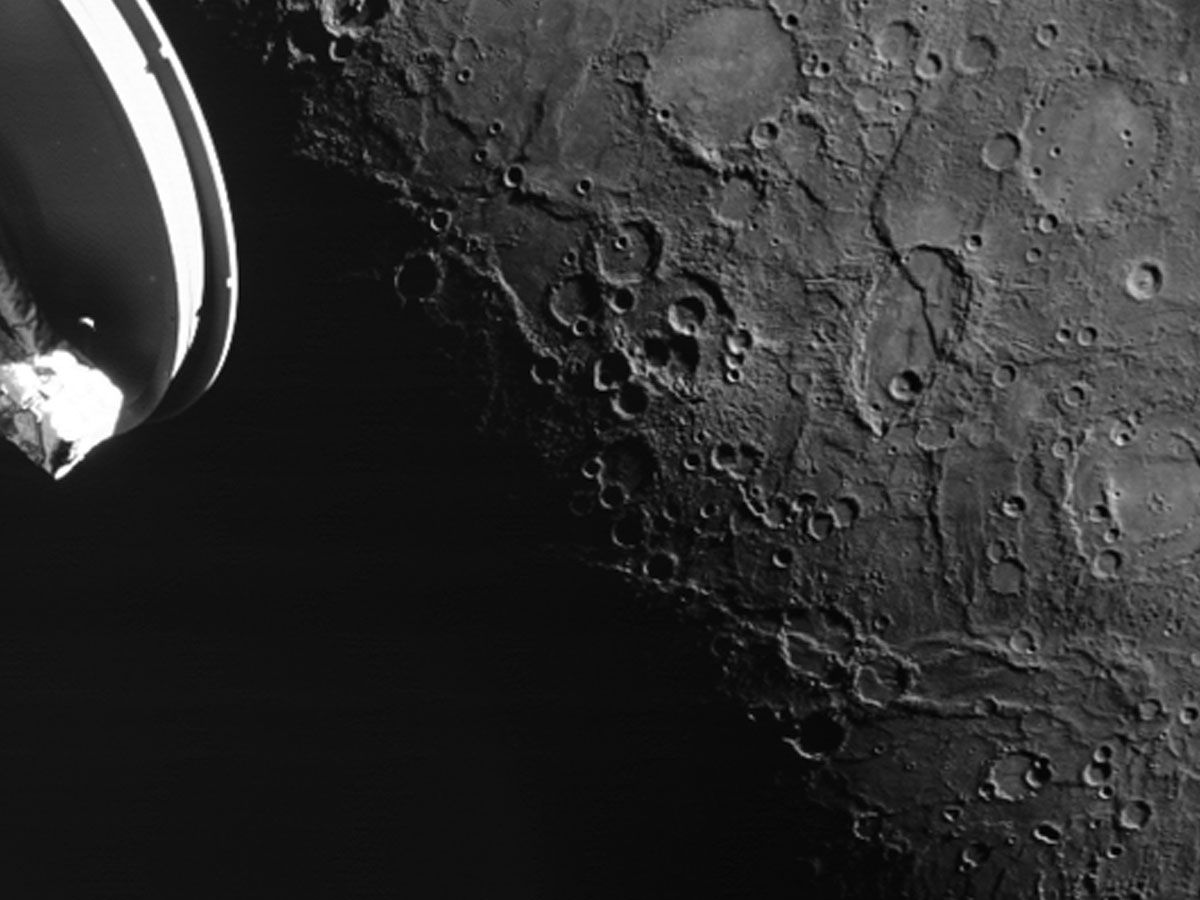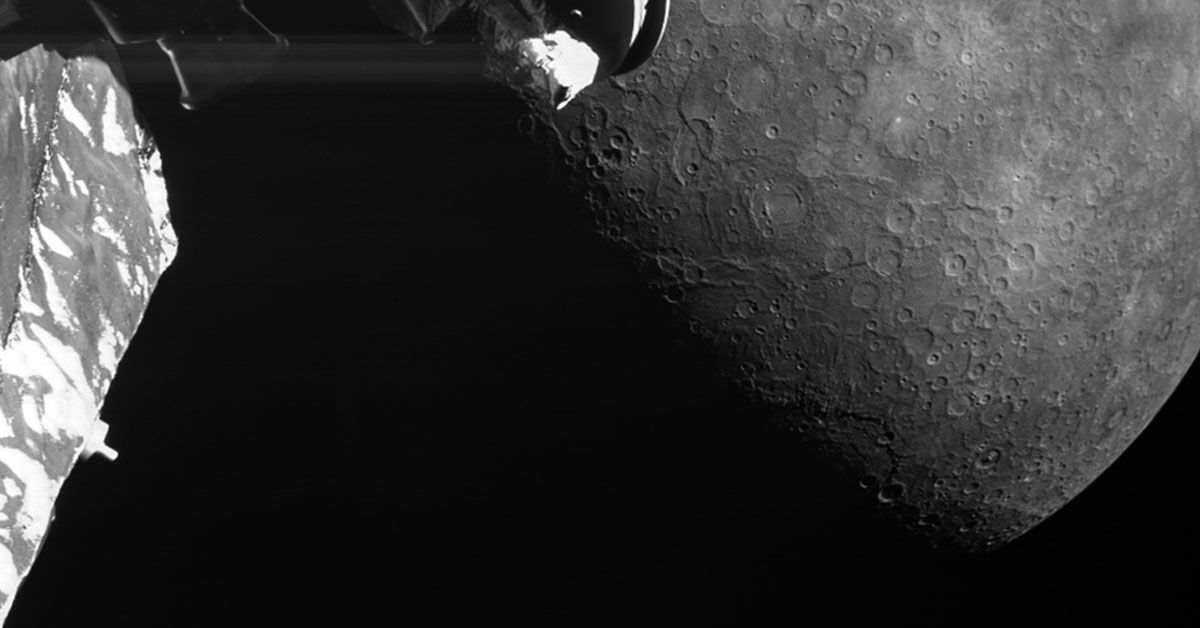Our understanding of the cosmos continues to grow, thanks to ambitious space exploration missions like BepiColombo. One planet that has drawn significant interest is Mercury, the smallest and innermost planet in our solar system.
On 19 June 2023, the BepiColombo spacecraft completed its third flyby of Mercury, offering intriguing insights into its geological features.
This mission, a collaborative endeavor by the European Space Agency and the Japan Aerospace Exploration Agency, has yielded fresh data and vivid images that enhance our knowledge of Mercury's geological history and unique characteristics.
About the Third Flyby of Mercury by BepiColombo
The BepiColombo spacecraft marked its third successful flyby of Mercury on 19 June 2023, 19:34 UTC.
In this episode of its exploration, the spacecraft passed at a close proximity of merely 236 kilometers above the planet's surface.
The event, which went smoothly, facilitated the capture and transmission of invaluable images to our home ground, Earth.
The third flyby offered a bounty of striking visuals of Mercury's terrain, recorded by the onboard monitoring camera of the spacecraft.
The images portrayed an impressive range of Mercury's geographical features – from a newly identified impact crater to mysterious volcanic formations.
Each snapshot served as a glimpse into the geological tales that the planet holds, thus advancing our understanding of its distinctive attributes.
The Mission: Mercury Orbit by 2025
Launched in 2018, the BepiColombo mission has a clear goal: to achieve a stable orbit around Mercury by 2025. The mission envisions leveraging six gravity-assist flybys of Mercury, with the latest being the third successful one.
The forthcoming flybys will further the spacecraft's journey, aiding it in accomplishing its mission objectives and providing more opportunities for the study of Mercury's magnetic, plasma, and particle environments.
Yet, reaching Mercury isn't a straightforward journey. The primary challenge is to neutralize the Sun's gravitational pull, which tries to veer the spacecraft off course.
The mission employs a solar electric propulsion system to counter this pull, delivering thrust arcs. These arcs, which can last from a few days to two months, are essentially long periods of thrust from the propulsion system.
Yet, using such a propulsion method poses its own difficulties, leading to intermittent navigation interruptions.
The Newly Named Crater: Manley
In the trove of images relayed back from BepiColombo's third flyby, a specific geological feature captivated researchers—a newly identified impact crater, christened as 'Manley'.
What made Manley noteworthy was the dark material apparent within it, offering potential clues about Mercury's geological past.

A thorough study of this dark material could illuminate the planet's formation and evolution, thus enhancing our understanding of its fascinating history. But, what other features does Mercury's terrain present?
Mercury's Tectonic Activity: The Beagle Rupes Escarpment
Beyond the intriguing craters, Mercury's tectonic features also shone in the spotlight. The Beagle Rupes escarpment, a striking tectonic structure, was captured in the images.

An escarpment like this is evidence of tectonic activity, the movement, and deformation of a planet's crust.
Observing such formations gives us a glimpse into the planet's tectonic history and the processes that have shaped its surface over eons.
Upcoming Flybys
The third flyby is not the end of BepiColombo's ambitious journey. The next Mercury flyby is scheduled for 5 September 2024, and it holds the promise of revealing even more about the planet's hidden mysteries.
Each pass at the planet enables us to collect more data, conduct further analyses, and refine our understanding of Mercury's composition and behavior.
To continue on its defined course towards Mercury, the BepiColombo spacecraft will gradually increase its solar electric propulsion. Starting in early August, the next arc sequence is set to last approximately six weeks.
These thrust arcs, indispensable in counteracting the Sun's gravitational pull, will ensure the spacecraft remains on track for its subsequent flybys.
With the increase in solar electric propulsion, the mission will require intensified communication and commanding efforts.
This intensified monitoring will help ensure accurate course, keeping BepiColombo on its journey toward fulfilling its mission.
As we anticipate the upcoming flybys and further data, what can we expect from the culmination of BepiColombo's grand adventure?
Sources: esa.int












